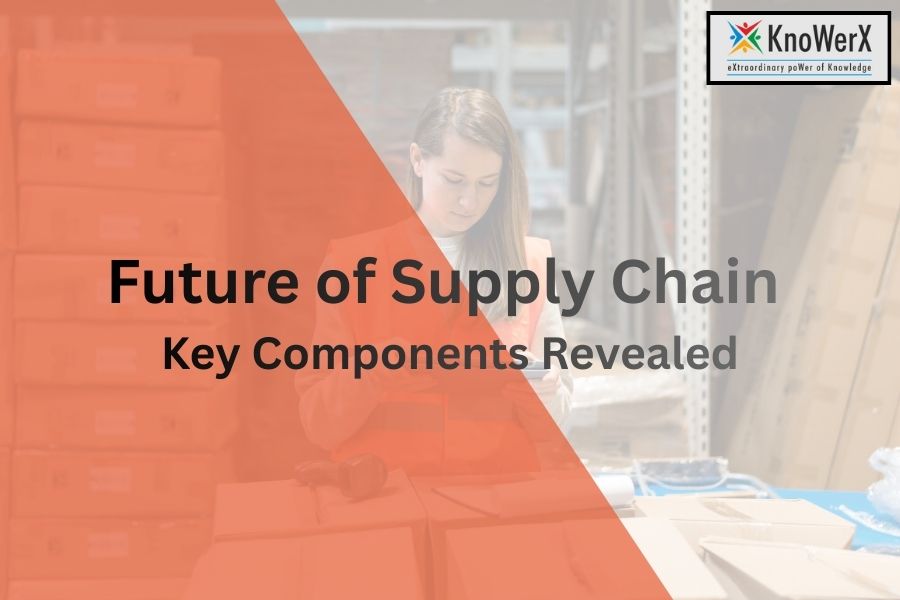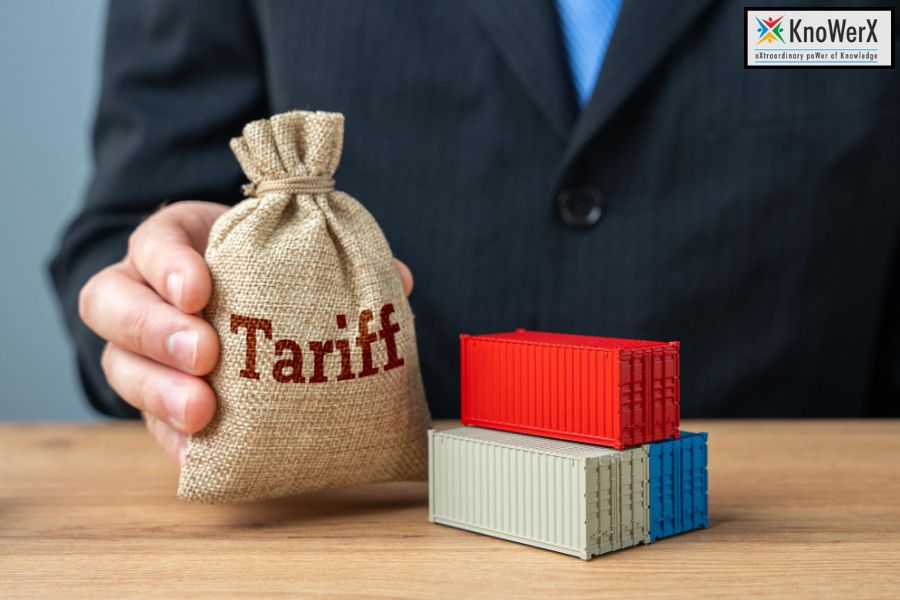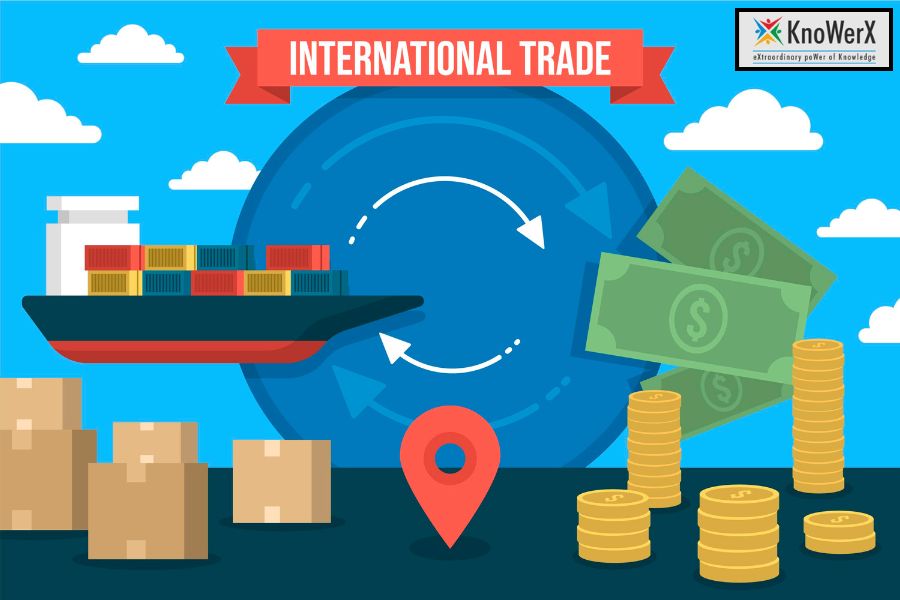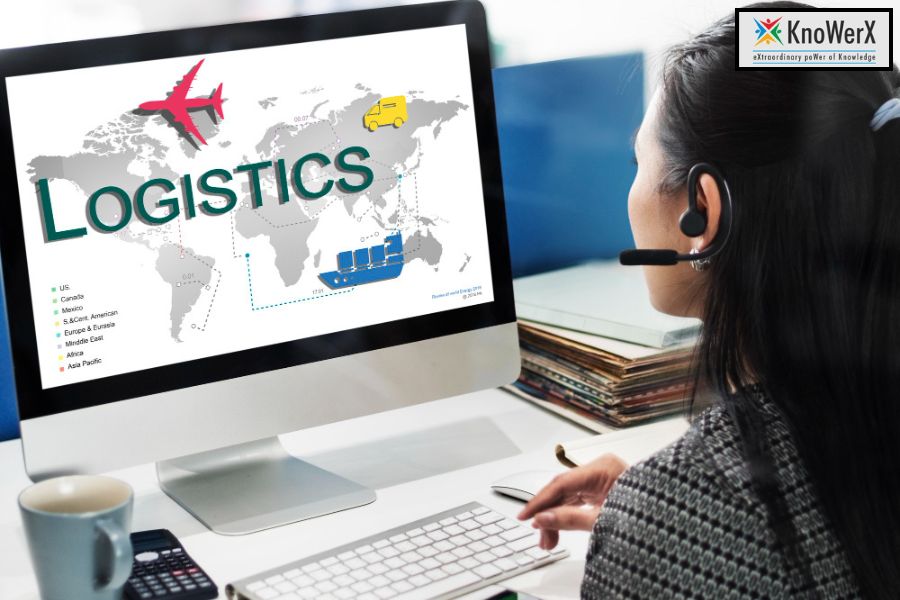The Future of Supply Chain: Key Components Revealed

The Future of Supply Chain: Key Components Revealed The Future of Supply Chain is unfolding faster than anyone expected. With businesses facing unpredictable markets, rising customer expectations, and continuous global disruptions, organizations can no longer rely on traditional supply chain models. Today, leaders must understand how digital innovation, sustainability, and resilience are reshaping operations across industries. As companies prepare for long-term growth, exploring the Future of Supply Chain becomes essential to stay competitive, agile, and relevant. What Is Driving the Future of Supply Chain? The Future of Supply Chain is not defined by a single trend it is driven by a powerful mix of global, digital, and organizational forces. Globalization 2.0 Shifts in trade regulations, geopolitical tensions, and new regional alliances have pushed companies to rethink sourcing models. The Future of Supply Chain will see more regional supply hubs, shorter networks, and diversified supplier bases. Sustainability Pressures Governments and customers now expect transparency, ethical sourcing, and carbon reduction. This is reshaping logistics, manufacturing, and distribution strategies at every level. Technology Acceleration Industry 4.0 tools like automation, AI, and IoT are becoming everyday essentials. In the Future of Supply Chain, technology will be the backbone of all planning, forecasting, and execution systems. The Demand for Speed and Transparency Same-day delivery, personalized experiences, and real-time visibility are now standard expectations. This demand will continue shaping the Future of Supply Chain, pushing companies to innovate at a rapid pace. Key Components Shaping the Future of Supply Chain AI, ML & Predictive Intelligence Artificial intelligence and machine learning are the drivers of smart decision-making. In the Future of Supply Chain, AI-powered demand forecasting, route optimization, and risk alerts will help organizations act proactively instead of reactively. Automation & Robotics Warehouses are rapidly adopting robotic systems, automated picking, and autonomous trucks. These technologies will dramatically improve speed and accuracy in the Future of Supply Chain. IoT for Real-Time Visibility With IoT devices attached to trucks, pallets, and equipment, companies will track goods at every step. Real-time insights will ensure better planning and faster responses critical for the Future of Supply Chain. Blockchain for Secure Operations Blockchain builds trust and transparency across partners. In Supply Chain, it will streamline contracts, reduce fraud, and enhance traceability from source to destination. Supply Chain Resilience & Risk Management From Linear to Networked Models Traditional linear supply chains are no longer effective. The Future of Supply Chain will be dynamic, interconnected, and flexible able to adjust instantly to disruptions. Scenario Planning and Stress Testing Businesses now run simulations to prepare for multiple risks pandemics, natural disasters, or supplier failures. This strategic planning is a significant part of the Future of Supply Chain. Diversified Sourcing Models To reduce dependency on single suppliers or regions, companies are embracing near-shoring, multi-sourcing, and local manufacturing all core to the Supply Chain. Sustainability & Green Logistics Decarbonization Efforts The Future of Supply Chain will focus heavily on carbon-neutral operations. Businesses are switching to renewable energy, low-emission vehicles, and eco-friendly packaging. Circular Economy Models In the Future of Supply Chain, reuse, recycling, and refurbishing will become standard practices especially in retail, electronics, and consumer goods industries. ESG Compliance and Reporting Organizations must now align with environmental and governance standards. This responsibility will drive major strategy shifts in the Supply Chain. Customer-Centric Supply Chain Models Hyper-Personalization Customers expect products that feel tailored to them. The Supply Chain Future will integrate data-driven personalization in production, delivery, and service. Demand-Driven Fulfilment Accurate forecasting and agile planning will help businesses respond instantly to changing demand. This responsiveness is a core feature of Supply Chain in future . Omnichannel Distribution Retailers and brands must deliver a seamless experience across online and offline channels. As Supply Chain evolves, omnichannel networks will become the standard model. Data & Visibility: The New Supply Chain Currency Data is the foundation of Supply Chain. To remain competitive, companies need real-time visibility and intelligent analysis. Real-Time Information Flow Instant data sharing across suppliers, manufacturers, and logistics teams improves accuracy and helps resolve issues faster. This transparency defines the Future of Supply Chain. Digital Control Towers Digital control towers provide a central hub for monitoring activities across the network. In the Future of Supply Chain, these platforms will be critical for forecasting, planning, and decision-making. Digital Twins Digital twins simulate supply chain operations and help identify gaps and opportunities. This tool will transform scenario planning in the Future of Supply Chain. Workforce of the Future New Skill Requirements Data literacy, analytical thinking, and digital proficiency will become essential skills for supply chain professionals. The Future of Supply Chain demands talent that can work alongside advanced technologies. Human-Machine Collaboration Automation will not replace people; it will enhance their capabilities. Supply Chain in future , workers and machines will collaborate to improve speed and efficiency. Remote & Virtual Operations Remote monitoring, digital collaboration, and virtual command centers will become everyday tools in Supply Chain. Cybersecurity as a Core Supply Chain Priority Rising Digital Threats More digital connections mean higher cyber risks. Protecting data and systems will be a top priority of Supply Chain in the Future. Building Secure Infrastructure Companies must invest in authentication systems, encrypted networks, and continuous monitoring. Strong cybersecurity will define Supply Chain. Proactive Risk Mitigation Regular audits, employee training, and resilience planning will help companies stay protected Supply Chain. The Role of Collaboration & Ecosystem Integration Unified Partner Networks The Future of Supply Chain relies on seamless collaboration across suppliers, manufacturers, logistics providers, and technology partners. Cloud-Based Collaboration Cloud systems enable faster communication, data sharing, and problem resolution key pillars of the Future of Supply Chain. Innovation Through Ecosystems When partners collaborate openly, innovation accelerates. This ecosystem approach is one of the strongest drivers shaping Supply Chain. Challenges Ahead High Cost of Transformation Digital adoption requires investment in systems, skills, and infrastructure a major challenge on the path to the Future of Supply Chain. Rapid Technology Shifts Constant innovation means companies must continuously adapt, which makes Supply Chain both exciting and challenging. Skill Gaps Many
Must-Attend Supply Chain Management Events 2025

Must-Attend Supply Chain Management Events 2025 In the fast-changing world of global trade, logistics, and operations, supply chain management continues to evolve faster than ever before. From AI-driven forecasting to sustainable sourcing, the future of supply chains is no longer just about efficiency it’s about resilience, agility, and innovation. As 2025 unfolds, a series of international events are set to redefine how companies design, manage, and optimize their supply networks. These conferences bring together industry leaders, innovators, researchers, and practitioners from around the world to share insights, case studies, and best practices. For professionals looking to sharpen their knowledge, expand their network, and stay ahead of emerging trends, here’s a comprehensive guide to the must-attend supply chain management events in 2025. Key Trends to Focus on at 2025 Events Before diving into the event calendar, it’s essential to understand the dominant themes shaping global supply chain conversations in 2025. Each of these trends will be central to discussions, exhibitions, and workshops throughout the year. Digital Transformation and AI Integration The global supply chain is rapidly digitizing. Artificial Intelligence, predictive analytics, and automation tools are helping organizations gain deeper visibility and improve decision-making. Expect sessions at 2025 events to highlight how AI-driven demand forecasting, digital twins, and robotic process automation are redefining planning and operations. Professionals attending these conferences will explore how digital technologies can streamline workflows, minimize human errors, and enhance end-to-end efficiency. Sustainability and Green Supply Chains Environmental responsibility is no longer optional it’s a core business priority. 2025 will see supply chain leaders focus heavily on sustainable logistics, carbon reduction, and circular economy models. From packaging innovations to renewable energy sourcing, events this year will showcase solutions that balance profitability with planet-friendly practices. Organizations that embed sustainability into their supply chains will gain long-term credibility and compliance advantages. Resilience and Risk Management The lessons from recent years pandemic disruptions, geopolitical tensions, and raw material shortages have transformed how companies view supply chain resilience. 2025 events will emphasize risk mitigation frameworks, scenario planning, and multi-sourcing strategies to build adaptable and shock-resistant supply chains. Industry experts will share strategies for managing volatility and ensuring continuity in the face of global uncertainty. Data-Driven Decision Making With the explosion of real-time data, analytics tools are becoming the backbone of supply chain intelligence. Conferences in 2025 will showcase how cloud computing, IoT, and predictive analytics empower leaders to make faster, smarter decisions. The focus will be on creating data ecosystems that unify suppliers, distributors, and customers ensuring every link in the chain is visible and efficient. Talent Development and Leadership A great supply chain needs great people. Upskilling and leadership development will remain top priorities in 2025. The industry is facing a global talent shortage, and companies that invest in training and professional certification will lead the next era of growth. Workshops and leadership sessions at these events will discuss how professionals can future-proof their careers with certifications such as Certified in Planning and Inventory Management (CPIM), Certified Supply Chain Professional (CSCP), and Certified Integrated Business Planner (CIBP) offered by institutions like KnoWerX. Major Global and North American Conferences North America remains a hub of supply chain innovation and thought leadership. Here are the most anticipated global and North American events of 2025 that every supply chain professional should consider attending. CSCMP EDGE 2025 Organized by the Council of Supply Chain Management Professionals (CSCMP), EDGE is one of the industry’s most respected annual events. Scheduled to be held in the U.S., it brings together top executives, academics, and innovators to discuss next-generation logistics, digital tools, and collaboration models. Expect interactive sessions, tech showcases, and networking opportunities that define the global direction of supply chain excellence. MODEX 2025 Known for its massive exhibition floor and live technology demonstrations, MODEX 2025 will be the ultimate destination for anyone exploring supply chain automation, robotics, and warehouse innovation. Attendees can experience cutting-edge solutions in real time and connect with over 1,000 exhibitors who are shaping the future of material handling and logistics operations. Gartner Supply Chain Symposium/Xpo North America 2025 The Gartner Supply Chain Symposium/Xpo is where strategic minds converge. In 2025, this event will focus on redefining supply chain strategy for an AI-driven world. It’s a must-attend for leaders aiming to transform operations through agility, technology adoption, and strategic thinking. Expect keynote speeches from global pioneers and in-depth workshops on digital strategy and customer-centric supply chain design. ASCM CONNECT Annual Conference Hosted by the Association for Supply Chain Management (ASCM), this event attracts professionals from across industries and continents. With sessions on innovation, risk management, and workforce development, ASCM CONNECT 2025 promises to inspire professionals to think bigger and act smarter. It also serves as a strong platform for networking and exploring global certification programs, including CPIM, CSCP, and CLTD. European and International Events Europe and Asia continue to play critical roles in global supply chain transformation. The following international events in 2025 will provide unparalleled access to ideas, technologies, and best practices from across the world. Transport Logistic Munich 2025 (Germany) The Transport Logistic Munich is one of the largest logistics and supply chain trade fairs globally. In 2025, it will focus on mobility, IT solutions, sustainability, and future logistics models. Professionals can expect interactive discussions with global leaders, alongside cutting-edge displays from transportation, warehousing, and software companies. It’s an ideal platform to understand European logistics standards and technological innovations. ProcureCon Europe 2025 This event is a must for procurement and sourcing professionals. ProcureCon Europe 2025 emphasizes strategic sourcing, supplier collaboration, and digital procurement transformation. Sessions will focus on optimizing supplier relationships and managing procurement complexity in an unpredictable global economy. Gartner EMEA Supply Chain Symposium/Xpo The EMEA edition of Gartner’s Symposium brings together supply chain leaders from Europe, the Middle East, and Africa. In 2025, the focus will be on leadership transformation, digital readiness, and sustainable growth. It provides a European lens on global challenges, offering frameworks to help organizations enhance resilience and innovation. LogiPharma (Switzerland) The LogiPharma conference remains the premier event
Advance with Online Six Sigma Yellow Belt Course

Advance with Online Six Sigma Yellow Belt Course In a world driven by efficiency and data, professionals across industries are seeking ways to enhance their skills and contribute meaningfully to organizational success. One of the most impactful certifications for process improvement is the Six Sigma Yellow Belt. Whether you’re just starting your career or looking to expand your operational knowledge, this certification offers a powerful foundation. And thanks to the flexibility of online learning, advancing with a Six Sigma Yellow Belt course has never been more convenient or effective. What is Six Sigma Yellow Belt Certification? The Six Sigma Yellow Belt certification is the entry-level credential in the Six Sigma hierarchy. It introduces learners to the core principles of Six Sigma methodology, which focuses on reducing variation, eliminating waste, and improving quality across business processes. Yellow Belts are typically team members who support larger Six Sigma projects led by Green or Black Belts. However, their role is far from minor. As a Six Sigma Yellow Belt, you’ll be equipped to identify inefficiencies, collect relevant data, and contribute to problem-solving initiatives. This certification is ideal for professionals in operations, supply chain, manufacturing, healthcare, finance, and even IT essentially any field where process optimization matters. Why It Matters Organizations today are under constant pressure to deliver faster, better, and more cost-effective results. The Six Sigma Yellow Belt certification empowers individuals to become change agents, helping their teams streamline operations and improve outcomes. It’s not just a resume booster it’s a mindset shift toward continuous improvement. The Power of Going Online Flexibility and Convenience One of the biggest advantages of pursuing a Six Sigma Yellow Belt online is flexibility. Learners can access course materials anytime, anywhere, making it easier to balance professional development with work and personal commitments. Whether you’re a full-time employee, a student, or a parent, online learning adapts to your schedule. Cost-Effective Learning Online Six Sigma Yellow Belt courses are often more affordable than traditional classroom programs. Without the need for travel, printed materials, or physical infrastructure, institutions can offer high-quality training at a fraction of the cost. This democratizes access to valuable skills, allowing more professionals to benefit. Interactive and Engaging Modern online platforms offer interactive modules, quizzes, discussion forums, and even virtual simulations. These tools enhance engagement and retention, making the learning experience dynamic and effective. You’re not just watching videos—you’re actively participating in your growth. Key Skills You Will Master The Six Sigma Yellow Belt curriculum is designed to build a strong foundation in process improvement. Here are the core skills you’ll develop: The DMAIC Framework DMAIC stands for Define, Measure, Analyze, Improve, and Control. It’s the backbone of Six Sigma methodology. As a Six Sigma Yellow Belt, you’ll learn how to apply this structured approach to identify problems, measure performance, analyze root causes, implement solutions, and sustain improvements. Each phase of DMAIC is critical: Define: Clarify the problem and set goals. Measure: Collect data to understand current performance. Analyze: Identify root causes of inefficiencies. Improve: Develop and implement solutions. Control: Monitor results to ensure lasting change. Process Mapping Understanding how processes flow is essential for identifying bottlenecks and redundancies. You’ll learn to create flowcharts, SIPOC diagrams (Suppliers, Inputs, Process, Outputs, Customers), and other visual tools that help teams see the big picture. Process mapping is a collaborative skill that fosters cross-functional understanding. Fundamentals of Lean Lean principles focus on eliminating waste and maximizing value. In your Six Sigma Yellow Belt training, you’ll explore concepts like: 5S: Sort, Set in order, Shine, Standardize, Sustain Kaizen: Continuous improvement through small, incremental changes Value Stream Mapping: Visualizing the flow of materials and information Combining Lean with Six Sigma creates a powerful synergy that drives efficiency and quality. Data-Driven Decision Making Six Sigma is rooted in data. You’ll learn how to collect, interpret, and use data to make informed decisions. Basic statistical tools such as mean, median, standard deviation, and control charts will become part of your toolkit. This analytical mindset helps eliminate guesswork and ensures that solutions are based on evidence. Problem-Solving Tools Effective problem-solving requires the right tools. As a Six Sigma Yellow Belt, you’ll master techniques like: Fishbone Diagram (Ishikawa): Identifying root causes across categories 5 Whys: Digging deeper into problems by asking “why” repeatedly Pareto Analysis: Prioritizing issues based on impact These tools empower you to tackle challenges methodically and collaboratively. Choosing the Right Online Course Not all Six Sigma Yellow Belt courses are created equal. When selecting a program, consider the following: Accreditation and Credibility Ensure the course is offered by a reputable institution with recognized accreditation. This guarantees that the curriculum aligns with global standards and that your certification will be valued by employers. Comprehensive Curriculum Look for a course that covers all essential topics, including DMAIC, Lean principles, data analysis, and problem-solving tools. Bonus modules on real-world applications and case studies add depth to your learning. Support and Resources A good online course provides access to instructors, discussion forums, and supplementary materials. Whether you need help with a concept or want to connect with peers, support makes a big difference. Certification Exam Preparation The final step in your Six Sigma Yellow Belt journey is passing the certification exam. Choose a course that includes practice tests, review sessions, and guidance to help you succeed. Frequently Asked Questions Ending Notes: KnoWerX’s Perspective At KnoWerX Mumbai’s leading Institute of Supply Chain Management we believe that the Six Sigma Yellow Belt is more than just a credential. It’s a gateway to operational excellence, strategic thinking, and career advancement. Our online Yellow Belt course is designed with working professionals in mind, offering flexibility, depth, and practical relevance. With decades of experience in supply chain education, KnoWerX understands the challenges faced by modern organizations. Our curriculum is tailored to equip learners with actionable skills that drive measurable results. Whether you’re in manufacturing, logistics, healthcare, or IT, our Six Sigma Yellow Belt program prepares you to lead change and deliver value. Join KnoWerX and become part of a community
The Ultimate Online Supply Chain Procurement Certificate Guide

The Ultimate Online Supply Chain Procurement Certificate Guide In today’s fast-paced global economy, the efficiency of supply chains can make or break a business. At the heart of this efficiency lies procurement, a vital function responsible for acquiring the right goods and services at the right time, cost, and quality. As businesses transform digitally and seek competitive advantages, the demand for skilled procurement professionals is soaring. One way to meet this demand and future-proof a career is by earning an Online Supply Chain Procurement Certificate. This certification empowers professionals with the knowledge and skills to excel in procurement and supply chain management roles while offering unmatched flexibility for learners across the globe. What Is an Online Supply Chain Procurement Certificate? An Online Supply Chain Procurement Certificate is a specialized credential designed to equip individuals with a comprehensive understanding of procurement processes within the supply chain. Unlike traditional degrees, this certification focuses directly on procurement strategies, supplier management, contract negotiation, and the use of data analytics in decision-making. Typically offered by accredited institutes, these programs cover essential topics such as strategic sourcing, supplier relationship management, risk assessment, and logistics fundamentals. The online format makes this certification accessible to working professionals, students, and career changers alike, as it allows for self-paced learning that fits around busy schedules. Many programs provide interactive modules, case studies, and assessments that simulate real-world scenarios, enabling learners to apply concepts effectively. Why Procurement Is a Career Powerhouse Procurement is no longer viewed as a transactional function focused solely on purchasing. It has evolved into a strategic business powerhouse that directly impacts a company’s profitability, sustainability, and competitive positioning. The modern procurement professional is a key player in supply chain optimization, cost control, innovation, and supplier collaboration. Globally, industries ranging from manufacturing and retail to healthcare and technology are actively seeking procurement experts who can manage complex supply chains and negotiate contracts that align with business goals. This demand translates into a wealth of career opportunities with attractive salary packages and upward mobility. Moreover, procurement careers offer a dynamic environment where professionals can develop problem-solving, analytical thinking, and leadership skills. Job roles such as Procurement Analyst, Strategic Sourcing Specialist, and Supply Chain Manager illustrate the diverse paths available, each commanding strategic importance within organizations. The Benefits of an Online Procurement Certificate Earning an Online Supply Chain Procurement Certificate offers many advantages that make it a smart career investment: Flexibility: The online delivery model allows learners to study from anywhere at any time, balancing education with work and personal commitments. This flexibility is especially important in today’s global economy where professionals seek continuous upskilling without career interruptions. Career Advancement: Certification serves as a powerful credential that validates expertise and can differentiate candidates in competitive job markets. Certified professionals are often considered for leadership and managerial roles due to their demonstrated commitment and knowledge. Skill Enhancement: The certificate program develops critical skills in cost analysis, supplier negotiation, contract management, risk reduction, and sustainable procurement practices. These capabilities enable professionals to contribute significantly to organizational goals. Global Recognition: Many online procurement certificates are recognized internationally by industry bodies and employers, increasing career mobility and opportunities abroad. Networking Opportunities: Online programs often provide access to global cohorts, expert instructors, and alumni networks, fostering connections that facilitate knowledge exchange and career growth. Cost-Effectiveness: Compared to traditional degrees, online procurement certificates are more affordable while still delivering specialized, industry-relevant education. Key Skills You Gain from Certification The knowledge gained through an Online Supply Chain Procurement Certificate equips professionals with essential skills that enhance their decision-making and operational efficiency: Strategic Sourcing and Supplier Negotiation: Learn to identify the best suppliers and negotiate contracts that balance cost, quality, and reliability. Contract Management and Risk Mitigation: Understand legal and ethical considerations while managing supplier relationships to mitigate risks. Supply Chain Analytics and Technology Integration: Utilize data-driven insights and digital tools to optimize procurement processes. Sustainable Procurement and Ethical Sourcing: Incorporate environmental and social responsibility into sourcing decisions, supporting corporate sustainability goals. Budget Optimization and Cost-Saving Strategies: Implement techniques to reduce expenses while maintaining product or service standards. These skills prepare professionals to handle complex procurement challenges effectively, making them invaluable assets to their organizations. How to Choose the Right Online Procurement Program Selecting the appropriate Online Supply Chain Procurement Certificate program requires careful consideration of several factors: Accreditation and Credibility: Ensure the program is offered by a recognized institution with industry endorsements. Course Content Relevance: The curriculum should cover contemporary procurement practices and tools relevant to the participant’s career goals. Duration, Cost, and Format: Look for programs that fit your time availability and budget, and that offer interactive materials and support. Mentorship and Placement Assistance: Programs providing career guidance and networking support can enhance post-certification opportunities. Success Stories and Employer Recognition: Research alumni outcomes and how employers value the certification for real-world validation. Making an informed choice leads to better learning outcomes and maximizes the certification’s value. Career Opportunities After Certification With an Online Supply Chain Procurement Certificate, graduates can pursue numerous roles across sectors actively recruiting procurement professionals. Common job titles include Procurement Specialist, Category Manager, Supplier Quality Manager, and Supply Chain Consultant. Salaries vary by experience and industry but generally reflect substantial growth potential due to the critical nature of procurement in business operations. Additionally, the shift towards digital procurement tools and sustainable supply chains is creating new demand for skilled professionals adept with technology and environmental practices. This evolving landscape provides a fertile ground for career advancement and specialization. Frequently Asked Questions Ending Notes: The KnoWerX Perspective From the vantage point of KnoWerX, a leading institute in supply chain management education, an Online Supply Chain Procurement Certificate represents a vital stepping stone for professionals aiming to thrive in procurement careers. KnoWerX emphasizes practical learning, industry-relevant curriculum, and global recognition, making its certification programs particularly powerful for career growth. Choosing KnoWerX’s online procurement certification means more than acquiring knowledge—it means joining a community committed to excellence and innovation in supply chain management. As procurement
How to Manage Tariff Impact on Global Sourcing Smartly

How to Manage Tariff Impact on Global Sourcing Smartly In today’s interconnected economy, global sourcing has become an essential part of supply chains. Companies rely on international suppliers for raw materials, components, and finished goods to reduce costs and expand market reach. However, shifting trade dynamics and government-imposed tariffs are reshaping global commerce. The Tariff Impact on Global Sourcing is one of the biggest challenges supply chain professionals face, as it directly affects pricing, supplier selection, and competitiveness. Managing tariffs smartly requires strategic thinking, adoption of technology, and a balance between cost efficiency and resilience. This article explores effective strategies, the role of analytics, and practical ways businesses can navigate tariff challenges. Understanding Tariff Impact on Global Sourcing What Exactly Are Tariffs? Tariffs are taxes imposed on imported goods, often intended to protect domestic industries or generate revenue. They can take different forms: Ad valorem tariffs: Based on the product’s value. Specific tariffs: A fixed fee per unit of goods. Safeguard duties: Temporary tariffs to protect local industries from sudden surges in imports. The Tariff Impact on Global Sourcing can disrupt cost structures and alter the attractiveness of international suppliers. Direct and Indirect Effects of Tariffs on Businesses The influence of tariffs goes beyond higher costs. Companies experience: Increased landed costs due to duties, handling fees, and customs charges. Supplier uncertainty as partners in tariff-heavy regions become less competitive. Pricing pressure because higher costs are passed to customers. Strategic shifts where sourcing decisions are re-evaluated. Industries Most Vulnerable to Tariff Fluctuations Some industries are more exposed to the Tariff Impact on Global Sourcing than others: Automotive: Vehicle manufacturers face tariffs on both parts and final products. Electronics: Semiconductors and components are heavily tariffed in some regions. Fashion and Apparel: Clothing companies face higher costs in cross-border trade. Agriculture: Import duties on food and raw materials disrupt supply chains. Smart Strategies to Manage Tariff Impact Diversifying the Supplier Network Depending on one country or region makes businesses vulnerable to tariff shocks. A diversified supplier network spreads risks and allows companies to switch partners quickly. For example, sourcing from both Asia and Europe reduces reliance on a single tariff-exposed region. Leveraging Free Trade Agreements (FTAs) Many governments have signed FTAs that eliminate or reduce tariffs. Aligning sourcing with these agreements minimizes the Tariff Impact on Global Sourcing and provides cost advantages. Nearshoring and Reshoring Opportunities Shifting production closer to the consumption market reduces exposure to tariffs. Nearshoring in regional hubs or reshoring back to domestic operations often balances tariff costs with faster delivery and better control. Negotiating with Suppliers Strategic negotiations with suppliers can mitigate tariff costs. Some suppliers may absorb part of the tariff or offer discounts on logistics and packaging to remain competitive. Exploring Duty Drawback Programs Companies that re-export products after importing components can benefit from duty drawback schemes. These refund tariffs and help reduce the Tariff Impact on Global Sourcing. Role of Technology & Analytics in Managing Tariff Impact Predictive Analytics for Trade Monitoring Tariff regulations change rapidly. Predictive analytics tools provide forecasts, simulate tariff scenarios, and help businesses plan sourcing strategies in advance. AI and Machine Learning in Supplier Selection Artificial intelligence can process vast amounts of trade and tariff data. Machine learning algorithms suggest alternative suppliers and routes to minimize the Tariff Impact on Global Sourcing. Blockchain for Transparency and Compliance Blockchain technology creates secure, tamper-proof records of trade transactions. By improving transparency, blockchain reduces compliance risks and customs delays. Digital Twins for Scenario Modeling Digital twins replicate supply chains in virtual environments. Companies use them to test the effects of new tariffs, optimize supplier routes, and redesign sourcing strategies without real-world disruptions. Balancing Cost with Resilience Why Cost-Only Strategies Fail While low-cost sourcing is attractive, tariffs can quickly erase savings. Solely focusing on cost leaves companies vulnerable to sudden tariff hikes or supply chain disruptions. Building Supply Chain Resilience Resilient supply chains balance efficiency with flexibility. This means: Working closely with suppliers for visibility. Building regional diversification. Maintaining buffer inventory to absorb shocks. Value-Driven Sourcing Over Purely Cost-Driven Sourcing Companies are increasingly shifting to value-based sourcing. Instead of choosing the cheapest supplier, they select partners who can guarantee reliability, compliance, and adaptability despite tariff changes. This reduces long-term risks tied to the Tariff Impact on Global Sourcing. Expanding the Perspective: Beyond Tariffs Geopolitical Risks and Trade Wars Tariffs often stem from geopolitical conflicts. Trade wars between major economies like the US and China illustrate how tariffs are used as bargaining tools, leaving global supply chains vulnerable. Currency Fluctuations and Tariff Costs Exchange rate volatility amplifies tariff costs. A weak local currency can make imports even more expensive, intensifying the Tariff Impact on Global Sourcing. Sustainability and Tariff Regulations Sustainability goals are increasingly linked with tariff policies. Countries impose eco-tariffs on non-compliant products, pushing businesses to adopt greener sourcing practices. Real-World Examples of Managing Tariff Impact Automotive Industry Adaptations Car manufacturers have diversified their supplier base across continents. By producing in multiple regions, they minimize tariff exposure and maintain competitiveness. Electronics Supply Chain Shifts Tech giants have relocated assembly from China to countries like Vietnam, India, and Mexico. This reduces tariff costs and creates alternative sourcing hubs. Fashion and Apparel Industry Response Fashion brands are adopting nearshoring strategies, producing closer to end markets. This shortens delivery cycles and reduces tariff-related costs. Future of Global Sourcing Under Tariff Pressure The Role of Policy and Trade Agreements The global tariff landscape is constantly evolving. Businesses must stay updated on trade agreements and align sourcing strategies accordingly. Rise of Regional Trade Blocs Regional blocs such as ASEAN, USMCA, and the EU offer tariff-free trade zones. Aligning with these blocs reduces the Tariff Impact on Global Sourcing. Technology as a Long-Term Enabler Digital transformation AI, IoT, blockchain will be central in helping companies adapt to tariff changes. Smart sourcing decisions supported by technology ensure agility and resilience. Frequently Asked Questions Ending Notes – Preparing Supply Chains for the Future with KnoWerX The Tariff Impact on Global Sourcing is not
How High Tariff Impact on Supply Chain Management

Trade War: How High Tariff Impact on Supply Chain Management Globalization has created deeply interconnected supply chains across the world. However, in recent years, rising trade tensions and retaliatory tariff measures have disrupted this harmony. One of the most prominent consequences of these conflicts is the High Tariff Impact that businesses face during a Trade War. For supply chain managers, procurement leaders, and business strategists, understanding these dynamics is no longer optional it’s an absolute necessity. At KnoWerX, we believe that professionals equipped with the right training and knowledge can transform these challenges into opportunities. With more than 32 years of collective experience in consultancy and education, our team has helped professionals in India and abroad strengthen their capabilities to deal with disruptions such as tariffs, inflation, and global trade conflicts. This article explores the multifaceted High Tariff Impact of a Trade War on supply chain management, while also offering strategies to mitigate risks and build resilience. Understanding the Concept of Trade War What is a Trade War? A Trade War occurs when nations impose tariffs or trade barriers on each other, typically in retaliation to protect domestic industries. While the intent is to boost local manufacturing, the result often spirals into higher costs, disrupted supply chains, and strained international relations. Why Trade Wars Matter for Supply Chains Modern supply chains span multiple continents. Raw materials may come from Asia, components from Europe, and final assembly in North America. When tariffs are imposed, the smooth flow of goods is disrupted, causing delays, cost escalations, and logistical challenges. The High Tariff Impact is therefore felt at every stage—from sourcing and production to delivery and customer satisfaction. High Tariff Impact: The Ripple Effect on Supply Chain Management The High Tariff Impact on supply chains goes beyond just higher prices. It creates a domino effect that touches every aspect of operations. Rising Production Costs Tariffs on imported raw materials drive up manufacturing costs. Companies face a tough choice: absorb the cost or pass it on to consumers. Supply chain managers are under immense pressure to optimize efficiency and reduce waste. Supplier Disruptions and Re-Evaluation Companies dependent on foreign suppliers are forced to re-negotiate or switch. In a Trade War, sourcing from tariff-affected regions becomes unsustainable. Businesses must develop supplier diversification strategies to reduce dependency. Inventory Stockpiling Challenges To avoid future tariff hikes, businesses often stockpile inventory. This ties up working capital and creates warehousing pressure. Ineffective inventory planning can lead to both overstock and shortages. Complex Logistics and Customs Delays High tariffs often bring stricter customs checks. Transportation costs rise due to new trade routes. Lead times extend, making supply chain forecasting harder. Shrinking Profit Margins Increased costs at every stage—from procurement to logistics—erode profits. Companies struggle to remain competitive in price-sensitive markets. India–U.S. Trade War: The Ongoing High Tariff Impact The recent escalation of the India–U.S. Trade War has created ripples across global supply chains. With the U.S. imposing tariffs of up to 50% on Indian exports—particularly in textiles, agriculture, and energy—the High Tariff Impact is already visible. Indian textile exporters, for instance, report a 50% drop in cotton yarn purchases due to higher costs, forcing the government to temporarily remove import duties on cotton to support garment manufacturers. Meanwhile, talks around a Bilateral Trade Agreement (BTA) have stalled, delaying much-needed relief for businesses caught in tariff crossfire. Economists warn that the combined effect of lost exports, weakening currency, and inflation could trim India’s GDP growth, while pushing companies to relocate manufacturing overseas. At the same time, India is exploring diversification strategies by strengthening trade ties with the EU, ASEAN, and even China, to cushion against the severe High Tariff Impact from the U.S. Case Studies: Trade War in Action The U.S.-China Trade War The U.S.-China Trade War is a textbook example of how tariffs can impact global supply chains. Tariffs on steel, aluminum, electronics, and automotive components forced companies to reconsider their sourcing strategies. American companies that relied heavily on Chinese imports faced severe High Tariff Impact, leading to supply disruptions and increased operational costs. The Brexit Example Although not always labeled as a Trade War, Brexit introduced tariff-like trade barriers between the UK and EU. Businesses experienced similar disruptions: higher costs, delays at borders, and the need to re-map supply chains. Strategies to Minimize High Tariff Impact Forward-thinking organizations do not just react—they prepare. Here are some strategies supply chain professionals can adopt: Supplier Diversification Avoid over-reliance on one country or supplier. Build a network of alternate suppliers across regions. Reduce vulnerability during a Trade War. Nearshoring and Local Sourcing Bringing production closer to home reduces exposure to tariffs. Though initial costs may be high, long-term savings offset the High Tariff Impact. Advanced Forecasting with Technology AI and predictive analytics help forecast tariff risks. Scenario planning ensures businesses are not caught off guard. Technology can simulate supply chain disruptions to test resilience. Strategic Inventory Management Balance stockpiling with lean inventory principles. Use advanced warehouse management systems for efficiency. Avoid tying up too much capital in goods. Training and Skill Development Supply chain professionals must stay updated with best practices. Training programs at KnoWerX help professionals adapt to new challenges. Certifications in supply chain management enhance decision-making during uncertain times. Building Resilient Supply Chains in a Trade War Era Resilience has become the cornerstone of modern supply chains. Businesses that survive a Trade War and manage the High Tariff Impact effectively are those that invest in building flexibility and agility into their operations. Key Elements of a Resilient Supply Chain Flexibility in Sourcing: Quickly shifting suppliers across regions when tariffs rise. Digital Visibility: Real-time tracking of goods and materials to forecast disruptions. Collaboration with Partners: Strong supplier and logistics partnerships ensure faster adaptation to changing trade policies. Risk Mitigation Planning: Scenario analysis to anticipate tariff hikes and create backup plans. By integrating resilience strategies, companies are not only reducing the High Tariff Impact but also gaining a competitive advantage in global markets. The Role of KnoWerX in Preparing Professionals At
Benefits of SCM Online Course for New-Age Pros

Benefits of SCM Online Course for New-Age Pros In today’s fast-evolving business ecosystem, supply chains have emerged as the lifelines of global trade. From sourcing raw materials to delivering final products to customers, every step requires careful coordination. With increasing digitalisation and global competition, supply chain professionals must stay ahead of the curve. One effective way to do that is by upskilling through online training. The Benifits of SCM online course for modern professionals are vast from career growth and global recognition to digital agility and leadership readiness. Whether you’re an aspiring executive or an experienced manager seeking to upgrade your skills, SCM e-learning programmes can help you unlock your potential and seize new opportunities. Why Choose an Online SCM Course? Flexibility & Convenience One of the most compelling reasons to choose an online SCM course is the flexibility it offers. Unlike traditional classroom programmes that require strict attendance and fixed schedules, online courses allow you to learn at your own pace ideal for professionals managing jobs, families, or multiple commitments. For learners who may be located far from urban training centres, virtual classrooms are also more accessible. You can log in from anywhere and still benefit from global-standard education without relocating. Cost-Effective & Time-Saving Besides flexibility, online courses tend to be more cost-effective than in-person alternatives. You save not only on travel and accommodation but also on tuition fees. Many programmes offer value-added resources such as downloadable content, live instructor sessions, and community discussion forums. Moreover, online SCM certifications focus on real-world applications, enabling professionals to apply concepts immediately in their work environments. This quick integration of knowledge into practice is another critical factor behind the Benifits of SCM online course. Up-to-Date, Industry-Aligned Curriculum Today’s supply chain challenges such as global disruptions, inflation, and digital transformation—require cutting-edge knowledge and tools. Reputable online SCM platforms like KnoWerX keep their curriculum updated with the latest industry frameworks, analytics tools, and case studies. From SCOR models to risk management strategies, you gain exposure to real-world business scenarios. These practical insights elevate your understanding far beyond textbook theory. Skills You Gain from SCM Online Courses Strategic Sourcing & Procurement Strategic sourcing is a vital component of supply chain success. An SCM course introduces you to techniques like supplier segmentation, cost modelling, and vendor contract negotiation. These skills are invaluable when working in procurement, operations, or supply chain planning roles. Inventory Management & Demand Forecasting One of the most tangible Benifits of SCM online course programmes is the knowledge of inventory control techniques. You’ll learn how to optimise inventory levels using ABC classification, EOQ models, and safety stock calculations ensuring service levels while minimising excess stock. Demand forecasting modules teach you how to use historical data, market insights, and statistical tools to predict future needs, improving customer satisfaction and profitability. Logistics, Distribution & Transportation Online SCM courses provide in-depth exposure to logistics functions such as warehousing, transport optimisation, multimodal shipping, and last-mile delivery. You’ll gain insights into how global supply chains operate across regions, how customs and documentation impact flow, and how technology enables real-time tracking. ERP & Supply Chain Software Tools Digital fluency is now a must-have skill in supply chain roles. Through platforms like KnoWerX’s Certifications & Training, you get introduced to ERP systems such as SAP, Oracle, and Microsoft Dynamics. Some courses also integrate supply chain simulation games and modelling tools to give you hands-on experience in real-world scenarios. Analytics, KPIs & Decision-Making Modern SCM roles demand strong analytical capabilities. Online courses help you understand performance metrics like fill rate, OTIF (on-time-in-full), inventory turnover, and working capital. These indicators are vital in making strategic supply chain decisions. Impact of SCM Training on Your Career Job Market Competitiveness Certifications from respected institutes give you a significant edge during recruitment. Recruiters actively seek candidates who possess globally recognised credentials like CSCP, CPIM, or CLTD available through KnoWerX, India’s Premier Elite APICS partner. Whether you’re aiming for a promotion, switching industries, or stepping into leadership roles, SCM training signals your readiness to take on responsibility. Higher Salary Potential Studies consistently show that professionals with supply chain certifications earn more than their uncertified peers. By developing skills that directly impact business performance like demand planning, cost reduction, and risk management—you can justify higher pay and added value in the organisation. Global Career Versatility From FMCG to automotive, healthcare to e-commerce supply chain is central to nearly every industry. With the Benifits of SCM online course, you gain a skillset that is transferable across domains and geographies. This broad applicability makes SCM an attractive career path for global-minded professionals. Confidence through Real Case Studies Case-based learning forms the heart of many SCM courses. You’ll analyse complex supply scenarios and devise actionable strategies. These exercises not only sharpen your decision-making but also prepare you to lead during real crises like raw material shortages or freight disruptions. For ongoing industry insights, KnoWerX also shares valuable thought leadership through its Supply Chain Blog. Benifits of SCM Online Course for New-Age Professionals Adapt to a Digitally Disruptive World With AI, IoT, blockchain, and big data transforming supply chains, staying updated is not optional—it’s essential. Online courses help you master modern digital tools and concepts like DDMRP (Demand Driven MRP), predictive analytics, and SCOR modelling, making you future-ready. Bridge the Theory-Practice Gap University education often lacks exposure to practical business challenges. The Benifits of SCM online course include applied learning through simulations, real-time assignments, and expert webinars, helping you transition from academic knowledge to actionable expertise. Join a Global Learning Community Online SCM courses connect learners from around the world. This interaction with professionals from diverse sectors creates a robust network of peers, mentors, and future collaborators. Receive Industry-Recognised Certification When you choose an accredited provider like KnoWerX, you earn internationally respected credentials from APICS, DDI, and SCOR. These qualifications open doors not just in India, but across North America, Europe, and Asia-Pacific. Why Choose KnoWerX for SCM Training? 30+ Years of Expertise in SCM Training Established in 1992, KnoWerX
Get CLTD Online Certification – Your Logistics Career Awaits

Get CLTD Online Certification– Your Logistics Career Awaits! The global logistics industry is experiencing unprecedented growth, driven by innovations in technology, the rise of e-commerce, and the increasing need for seamless transportation and distribution networks. To stay ahead of the curve, professionals must be equipped with advanced skills and recognised credentials. One such credential that stands out is the CLTD (Certified in Logistics, Transportation and Distribution) certification. Opting for a CLTD online certification gives you the flexibility to master logistics fundamentals and specialised knowledge without disrupting your professional commitments. Whether you aim to lead strategic supply chain operations or enhance your current role, this certification opens doors to endless opportunities in a competitive global market. What Is CLTD? CLTD, which stands for Certified in Logistics, Transportation and Distribution, is a globally recognised certification offered by APICS, a part of the Association for Supply Chain Management (ASCM). It validates your expertise in a wide range of logistics topics, including: Logistics strategy and planning Transportation and distribution management Warehouse operations Inventory and order management Global logistics considerations The CLTD certification is ideal for logistics managers, distribution professionals, supply chain analysts, and anyone aspiring to specialise in logistics. Why Choose a CLTD Online Certification? Flexibility and Convenience One of the biggest advantages of CLTD online certification is its flexibility. You can learn at your own pace, making it perfect for working professionals or students balancing other responsibilities. Access to Digital Resources Online certification programs provide a wealth of digital tools, including interactive study guides, video lessons, eBooks, and online discussion forums. This ensures a comprehensive and engaging learning experience. Remote Exam Options With an online CLTD program, even the exam can be taken remotely. Proctored online tests allow candidates to take the certification exam from the comfort of their home or office. Cost-Effective Learning Online programs often come at a lower cost than in-person training. They also reduce travel expenses, accommodation costs, and time off work, making CLTD online certification a budget-friendly option. Learning Without Geographic Boundaries Since CLTD online certification is accessible from anywhere, it allows individuals from remote or international locations to benefit from top-tier logistics education. Course Structure and Learning Modules The CLTD online certification course is structured into eight main modules: Logistics Overview & Strategy Capacity Planning & Demand Management Order Management Inventory & Warehouse Management Transportation Management Global Logistics Logistics Network Design Reverse Logistics & Sustainability Each module is designed to provide in-depth knowledge and practical insights that professionals can apply directly to their roles. Learners can access case studies, scenario-based questions, and real-world examples to reinforce concepts and apply them in their organisations. Career Opportunities After CLTD Certification Pursuing a CLTD online certification significantly enhances your career prospects. Here are some of the job roles you can pursue: Logistics Manager Distribution Centre Supervisor Supply Chain Analyst Inventory Control Specialist Transportation Manager With global logistics becoming increasingly complex, certified professionals are in high demand across various industries, including retail, manufacturing, healthcare, and e-commerce. Higher Salary Potential CLTD-certified professionals often command higher salaries due to their specialised knowledge and credibility in logistics. Global Recognition The certification is recognised internationally, opening doors to global career opportunities and cross-border job roles. Opportunity to Lead Professionals with a CLTD online certification are more likely to be entrusted with leadership roles and strategic responsibilities in logistics operations. Key Benefits of CLTD Online Certification Enhances Professional Credibility Being CLTD-certified showcases your commitment to professional development and your competence in handling complex logistics functions. Helps in Decision-Making The certification equips you with tools and strategies that improve decision-making, reduce costs, and increase supply chain efficiency. Keeps You Updated The dynamic logistics environment demands continuous learning. A CLTD online certification helps you stay updated with global trends and best practices. Improves Operational Efficiency Certified professionals often introduce efficient processes in transportation, warehousing, and inventory management, contributing to an organisation’s bottom line. Builds Confidence and Problem-Solving Skills Through structured learning and practical assessments, CLTD online certification enhances your ability to solve real-world logistics challenges. Tips to Succeed in CLTD Online Preparation Set a Study Schedule: Allocate time daily or weekly for your studies and stick to it. Use Official Resources: Invest in official CLTD Learning Systems and exam simulators. Join Online Forums: Participate in CLTD study groups or forums for peer support. Take Practice Tests: These simulate the real exam environment and boost confidence. Engage with Instructors: When available, make the most of instructor-led sessions to clarify doubts. Review Regularly: Frequent revision of topics ensures better retention and understanding. Why Choose KnoWerX for Your CLTD Journey? KnoWerX is a leading provider of Supply Chain Management and logistics training in India. Here’s why it’s the ideal partner for your CLTD online certification journey: Expert Faculty: Industry professionals with real-world experience Flexible Learning Options: Self-paced and instructor-led online programs Official APICS Learning Partner: Ensures access to authentic and updated material Support & Mentorship: Continuous guidance through your learning journey Proven Success: High pass rates and excellent student feedback Career Guidance: KnoWerX offers support even after certification to help professionals make the most of their qualifications Frequently Asked Questions Ending Notes The logistics industry is evolving, and the demand for certified professionals is at an all-time high. Getting your CLTD online certification not only boosts your knowledge but also positions you as a competent, future-ready professional. Whether you’re just starting or looking to climb higher in your logistics career, now is the time to act. With KnoWerX, you gain more than just training; you gain a trusted partner in your professional journey. Start your CLTD online certification today and unlock a world of opportunities. Your logistics career awaits! Image Reference: Freepik Disclaimer: All trademarks, logos, and brand names are the property of their respective owners. All company, product, and service names used in this website are for identification purposes only. Use of these names, trademarks, and brands does not imply endorsement.
Unlock Career Growth: Top Benefits of APICS CPIM 8.0

Unlock Career Growth: Top Benefits of APICS CPIM 8.0! In today’s fast-paced, globalised world, managing supply chains efficiently is more critical than ever. The APICS Certified in Planning and Inventory Management (CPIM) 8.0 is one of the most respected certifications for supply chain professionals. With a refreshed structure and updated content, CPIM 8.0 is tailored to match the evolving demands of modern industry. In this article, we explore the benefits of APICS CPIM 8.0, covering how it impacts professional development, enhances learning, and boosts business outcomes. Understanding the APICS CPIM 8.0 Certification What Is CPIM 8.0? APICS, now part of the Association for Supply Chain Management (ASCM), developed CPIM (Certified in Planning and Inventory Management) to validate an individual’s expertise in operations and supply chain. The 8.0 version is the latest iteration, combining decades of industry insights with current trends and technologies. This version simplifies the previous two-part exam into a single, unified format and focuses more on real-world applications, strategic thinking, and digital competencies. The benefits of APICS CPIM 8.0 extend far beyond passing an exam—they enhance career readiness, decision-making skills, and operational efficiency. Enhanced Curriculum and Updated Content Aligned with Global Supply Chain Practices One of the standout benefits of APICS CPIM 8.0 is its alignment with today’s global supply chain standards. Unlike earlier versions, CPIM 8.0 incorporates frameworks used by top multinational companies and integrates concepts such as: Integrated business planning Enterprise resource planning (ERP) Sales and operations planning (S&OP) Digital supply chain transformation This ensures that professionals are learning the most up-to-date methodologies and strategies used in the real world. Relevance to Current Business Challenges CPIM 8.0 addresses pressing challenges faced by supply chains globally, such as disruptions, inflation, inventory volatility, and digital automation. This modern focus equips professionals with the tools to respond effectively to rapid changes, making the benefits of APICS CPIM 8.0 crucial in a VUCA (Volatile, Uncertain, Complex, and Ambiguous) environment. Improved Learning Experience Streamlined Structure for Better Focus One of the most user-friendly benefits of APICS CPIM 8.0 is its revamped structure. Instead of two separate modules, CPIM 8.0 features a single, cohesive learning path. This streamlined approach helps learners maintain focus and momentum, reducing the time and effort required to prepare. Flexibility with Online Learning Tools CPIM 8.0 offers blended learning experiences with online courses, mobile-friendly content, self-paced modules, and virtual simulations. These tools allow working professionals to prepare without disrupting their schedules. With these features, the benefits of APICS CPIM 8.0 make certification more accessible to a wider range of learners, from recent graduates to senior managers. Practice Tests and Assessments Interactive assessments and mock exams allow learners to gauge their understanding and identify areas that need improvement. These features enhance retention and confidence, making the benefits of APICS CPIM 8.0 evident throughout the learning process. Career Advancement Opportunities Recognition Across Industries The CPIM 8.0 certification is globally recognised and respected across industries including manufacturing, logistics, healthcare, automotive, and retail. Having this credential on your resume increases credibility and positions professionals as supply chain experts. One of the primary benefits of APICS CPIM 8.0 is that it signals to employers that you possess advanced planning and inventory management capabilities. Path to Promotions and Pay Raises Professionals with CPIM certification are more likely to receive promotions, take on leadership roles, and command higher salaries. Studies have shown that certified individuals earn up to 27% more than their non-certified peers. These tangible outcomes are among the most rewarding benefits of APICS CPIM 8.0 for career growth. Strategic Decision-Making Skills CPIM 8.0 fosters critical thinking and problem-solving, especially in supply chain design, capacity planning, and inventory control. Professionals gain the ability to make data-driven decisions that positively impact their organisation’s bottom line. This strategic mindset is one of the transformative benefits of APICS CPIM 8.0. Organisational Benefits Increased Operational Efficiency Employers who encourage their teams to pursue CPIM certification report significant improvements in productivity and efficiency. CPIM 8.0 provides knowledge that helps streamline workflows, optimise inventory levels, and reduce waste. These are measurable benefits of APICS CPIM 8.0 at the organisational level. Enhanced Collaboration and Communication Certified professionals understand the language of supply chain across departments, which improves cross-functional communication. From procurement to production and sales, CPIM 8.0 helps integrate the entire supply chain ecosystem. This harmonisation is among the most practical benefits of APICS CPIM 8.0 for businesses. Risk Mitigation and Business Resilience With modules focused on risk management, contingency planning, and supply chain continuity, CPIM 8.0 prepares individuals to manage uncertainties. Organisations with CPIM-certified professionals are better equipped to handle disruptions, making this one of the most strategic benefits of APICS CPIM 8.0. Validation of Professional Expertise Internationally Recognised Credential The CPIM 8.0 is not just another certification it’s a mark of excellence. Whether you’re in India, the USA, the Middle East, or Europe, the credential speaks the universal language of supply chain proficiency. This broad recognition is among the key benefits of APICS CPIM 8.0 for those looking to work globally. Demonstrates Commitment to Professional Growth Earning the CPIM 8.0 certification showcases a proactive attitude toward learning and professional development. It demonstrates that a candidate is committed to mastering the intricacies of supply chain management. This perception among employers is one of the subtle yet powerful benefits of APICS CPIM 8.0. Builds Confidence and Credibility CPIM-certified professionals often take on mentoring roles within their organisations. Their certification gives them the confidence to guide others, take initiative, and lead projects. This development of leadership capabilities further adds to the benefits of APICS CPIM 8.0. Competitive Advantage in the Job Market Preferred by Recruiters With the rise of supply chain digitisation, companies are looking for certified professionals who understand integrated systems. Recruiters often prefer candidates with CPIM credentials, making job applications more competitive. One of the leading benefits of APICS CPIM 8.0 is that it boosts visibility and appeal in the job market. Cross-Functional Role Opportunities Beyond traditional supply chain roles, CPIM 8.0 opens doors to careers in procurement, demand
Understanding 4 Components of Inventory Management

Understanding 4 Components of Inventory Management At KnoWerX, we believe that mastering the fundamentals is key to unlocking long-term success in the world of supply chain and operations. With over 33 years of collective experience, our mission is to simplify complex processes and help professionals across industries become experts through our industry-leading training programs. One of the most essential areas in the supply chain process is It is the backbone of supply continuity and operational efficiency. In this article, we’ll break down the 4 core components of inventory management and share practical tips to understand and manage them effectively. 1. Inventory Control – The Foundation of Inventory Management Inventory control focuses on the regulation and supervision of stock to maintain the right balance – not too much and never too little. ✅ Tips for Effective Inventory Control: Establish Minimum and Maximum Stock Levels: Set threshold levels for each product to avoid overstocking and stockouts. Use ABC Analysis: Categorise inventory into three groups (A – high value, B – moderate value, C – low value) to prioritise control efforts. Implement FIFO or LIFO Methods: Use First-In-First-Out or Last-In-First-Out strategies depending on the nature of your inventory. Leverage Inventory Management Software: Invest in tools that automate stock monitoring, generate alerts, and provide real-time data. At KnoWerX, our inventory management training emphasises the importance of building a solid inventory control process that can be scaled as business needs grow. 2. Inventory Forecasting – Anticipate Demand Accurately Forecasting is the predictive component of inventory management, helping organisations estimate future demand and align inventory levels accordingly. ✅ Tips for Inventory Forecasting: Analyse Historical Sales Data: Review past data to identify seasonal patterns, sales cycles, and customer preferences. Collaborate Across Departments: Sales, marketing, and finance teams should all contribute to accurate demand forecasts. Factor in External Influences: Account for holidays, market trends, economic shifts, and promotional campaigns. Use Forecasting Software: Tools integrated with your inventory management system can improve accuracy through AI and machine learning. Professionals trained at KnoWerX learn to build data-driven forecasting models that ensure optimised inventory levels and reduce excess carrying costs. 3. Inventory Procurement – The Art of Timely Replenishment Procurement is about sourcing the right quantity of inventory at the right time and cost. It is a strategic component that directly impacts cost efficiency. ✅ Tips for Smart Inventory Procurement: Choose Reliable Suppliers: Build relationships with vendors who are consistent in quality and delivery timelines. Utilise Economic Order Quantity (EOQ): Calculate the most cost-effective quantity to order, balancing holding and ordering costs. Adopt Just-In-Time (JIT) Strategies: Reduce carrying costs by ordering inventory only when needed. Monitor Supplier Performance: Regular evaluations help ensure that procurement practices support efficient inventory management. With KnoWerX’s specialised training, professionals gain real-world insights into supplier selection, order timing, and cost negotiation to enhance procurement practices. 4. Inventory Auditing – Ensuring Accuracy and Accountability Auditing is the verification process in inventory management that ensures what’s recorded matches physical inventory. ✅ Tips for Thorough Inventory Auditing: Conduct Cycle Counting: Regularly count subsets of inventory to avoid year-end bottlenecks. Use Barcoding and RFID: Automate data entry and reduce human errors through technology. Implement Audit Trails: Maintain a digital trail of every movement and adjustment made in the inventory. Train Staff on Best Practices: Everyone handling inventory should understand the importance of accurate data. Our programs at KnoWerX prepare professionals to implement foolproof auditing systems that prevent loss, theft, and mismanagement. The Role of Technology in Inventory Management Digital transformation has reshaped inventory management. Technologies like AI, IoT, and blockchain are enabling real-time visibility, automation, and predictive analytics. ✅ Tips for Embracing Technology: Invest in Cloud-Based Inventory Solutions: Access data anytime, anywhere. Implement IoT Sensors: Gain real-time insights into stock movement and warehouse conditions. Use AI for Predictive Analytics: Forecast demand more accurately with machine learning algorithms. Integrate Systems: Ensure your inventory tools communicate with procurement, sales, and finance platforms. Inventory Management Metrics to Track To gauge the effectiveness of your inventory management strategy, monitor these essential metrics: Inventory Turnover Ratio: How often inventory is sold and replaced. Carrying Cost of Inventory: Total cost to hold inventory over a period. Order Accuracy Rate: Percentage of orders fulfilled without errors. Stockout Rate: How frequently items go out of stock. Tracking these KPIs helps in making informed decisions and highlights areas needing improvement Sustainable Inventory Management Practices As environmental concerns grow, sustainability is becoming integral to inventory management. ✅ Tips for Greener Inventory Practices: Minimise Overstocking: Reduce waste and obsolete inventory. Optimise Transportation Routes: Cut emissions with better logistics planning. Source Locally: Reduce carbon footprint and support local economies. Recycle and Reuse Packaging: Lower costs and promote eco-conscious branding. The KnoWerX Advantage in Inventory Management Training Understanding and mastering these 4 components of inventory management – control, forecasting, procurement, and auditing – is critical for any supply chain professional. At KnoWerX, we go beyond just teaching the concepts. Our programs include hands-on simulations, real-life case studies, and mentoring from industry veterans. 📌 Why Choose KnoWerX? 33+ years of expertise in education and consultancy. Global exposure, having trained professionals from large companies in India and abroad. Best-in-class pricing for the highest quality education. One-stop destination for certifications, domain knowledge, and career advancement in supply chain. Frequently Asked Questions Final Thoughts Effective inventory management is not just about keeping track of goods. It’s a dynamic discipline that requires strategic planning, technological integration, and continuous improvement. By understanding the 4 components of inventory management, professionals can contribute significantly to cost savings, operational efficiency, and customer satisfaction. If you’re looking to enhance your career in supply chain, consider enrolling in our professional training courses at KnoWerX. Learn from the best, and become the expert your organisation needs. Visit us today to explore our offerings and take the first step toward inventory mastery! Image Reference: Freepik Disclaimer: All trademarks, logos, and brand names are the property of their respective owners. All company, product, and service names used in this website are for identification purposes only. Use of
